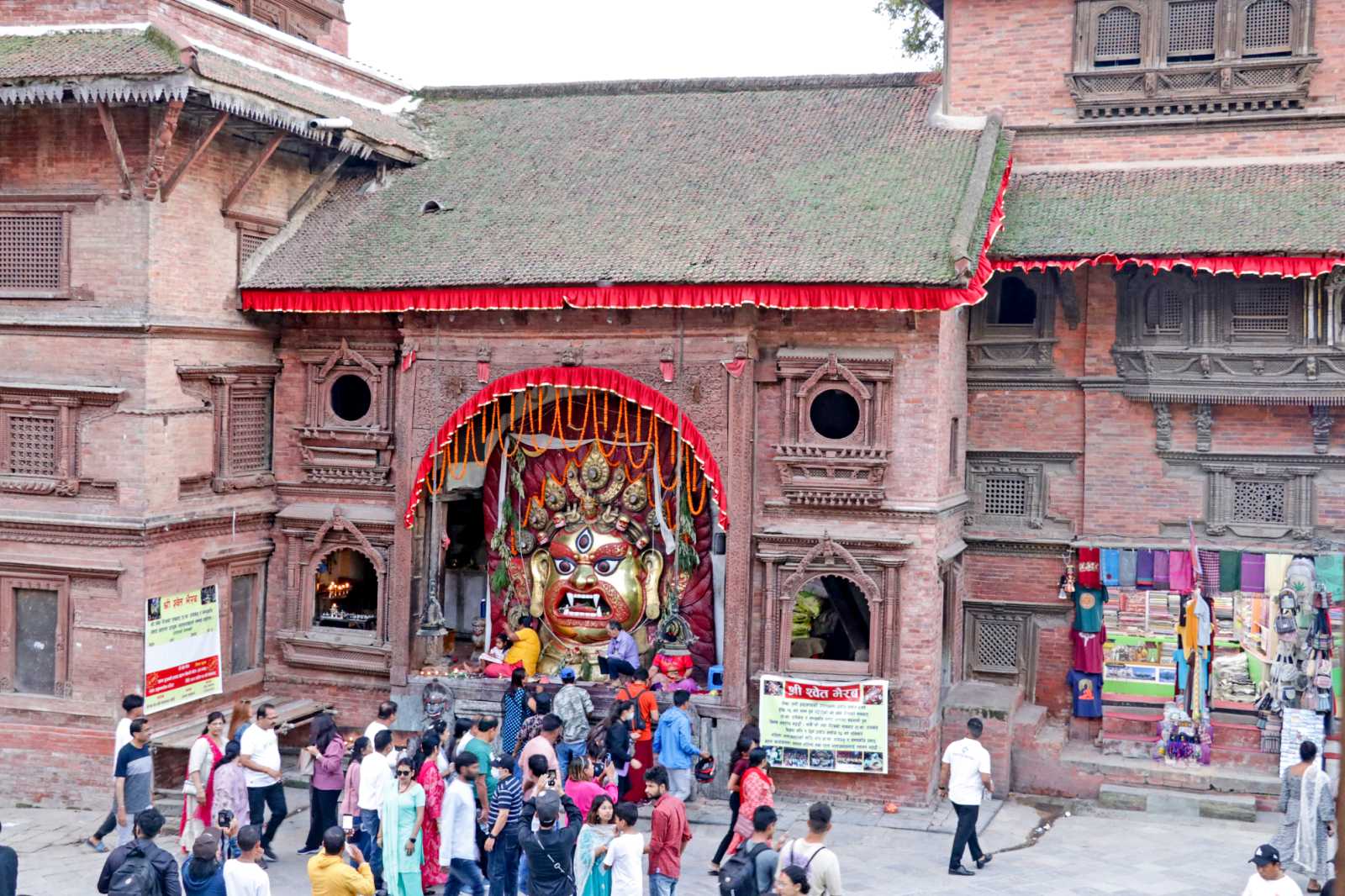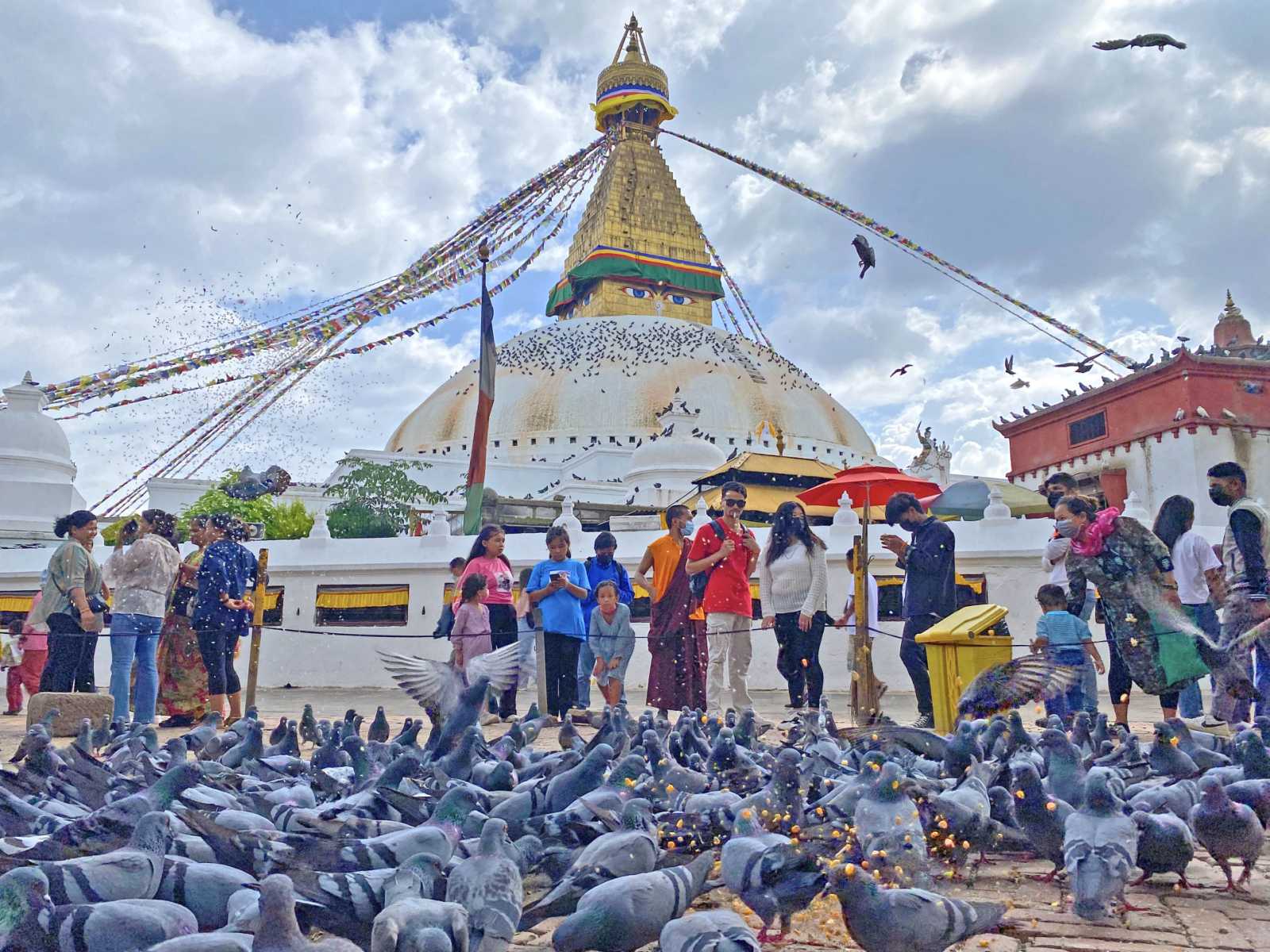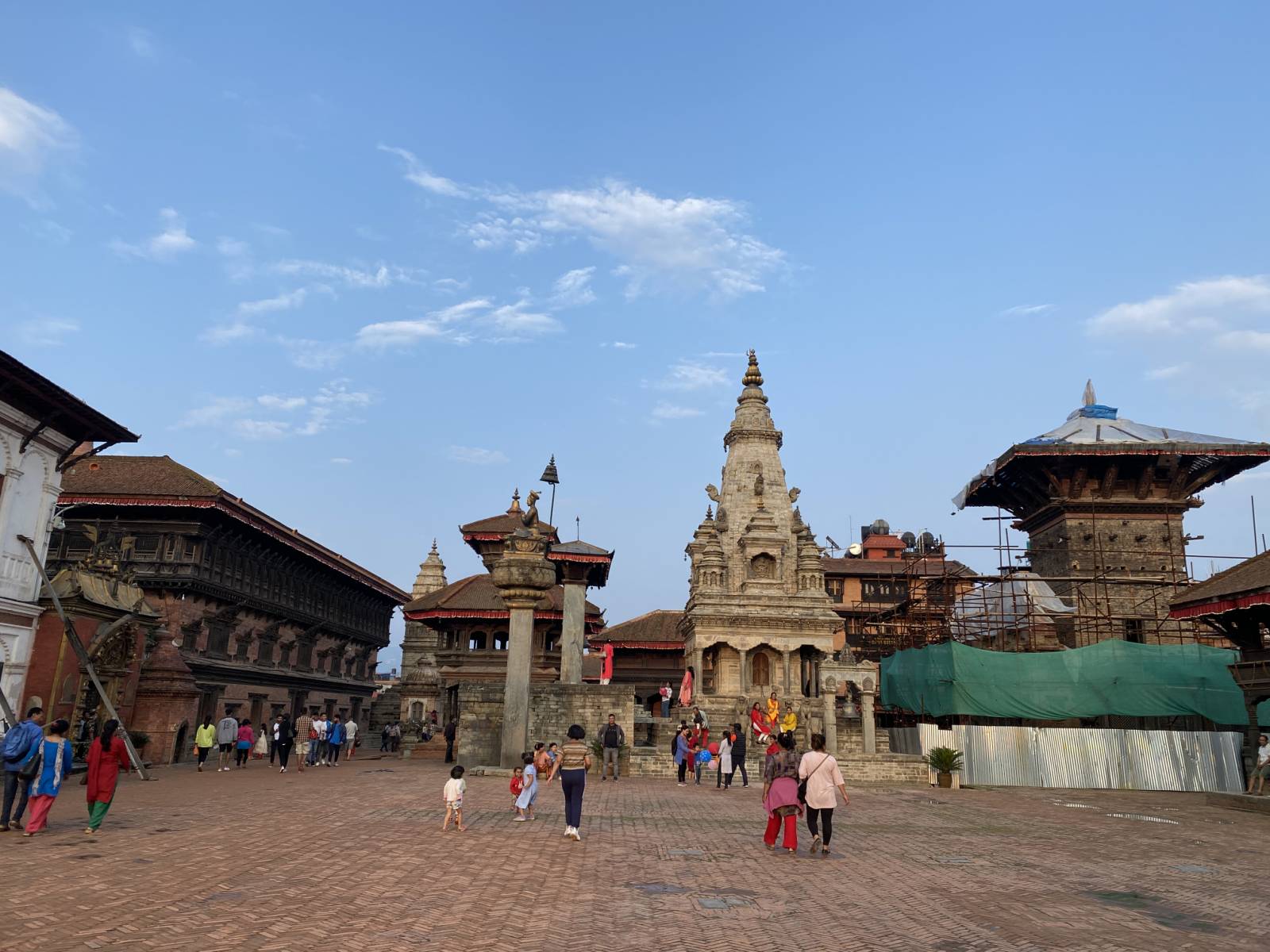Kathmandu Durbar Square, also known as Basantapur Durbar and Hanuman Dhoka, is an old durbar square in Kathmandu‘s city center. In the heart of old Kathmandu city, Basantapur never fails to impress first time visitors with its intricate wood carvings and rich history. Hanuman Dhoka was built during the Licchavi period (4th to 8th centuries AD), and King Pratap Malla extended the property significantly in the 17th century. With the highest concentration of old structures, the square is home to several palaces, courtyards, and temples. It is also known as “the Museum of Temples” because there are over 50 temples in the square. Handicraft shops may be found in the courtyards around Gaddi Baithak, where you can see a variety of attractive purchasable handicrafts.
Among the 50 temples that lie in the vicinity, lies the temple of the titular deity, Taleju Bhawani. The Durbar is divided into two courtyards, the outer Kasthamandap, Kumari Ghar, and Shiva-Parvati Temple, and the inner section consisting of Hanuman Dhoka and the main palace. Some floors have been converted to museums dedicated to three generations of Shah kings of Nepal. Most parts of the palace premises are open to tourists throughout the week.
TALEJU TEMPLE: The Taleju Temple is the tallest of all structures, built by King Mahendra Malla in 1549 AD. This temple is open to the public for one day each year during the Dashain festival.
KUMARI TEMPLE: The 17th century Kumari Temple, or the temple of Living Goddess is an example of highly developed Nepali craftsmanship. This is the official residence of Living Goddess Kumari of Kathmandu. Visitors can get a peek of the living goddess and seek blessings during special hours.
JAGANNATH TEMPLE: Built in the 16th century, the Jagannath Temple is known for the fascinating erotic figures carved on the wooden struts.
NASAL CHOWK: This lovely courtyard inside the main entrance will be your first experience of the historic royal residence. Nasal Chowk was built during the Malla dynasty, although many of the structures in the area were built during the Rana period. Nasal Chowk was utilized for coronations throughout the Rana regime, and the practice persisted until 2001.
NARSINGHA STATUE: Narsingha is thought to be Lord Vishnu in his man-lion avatar, disemboweling a demon. Pratap Malla erected the stone image in 1673, and according to the inscription on the monument, he did so out of fear of upsetting Vishnu by dancing in a Narsingha attire.
SWET BHAIRAV: Swet Bhairav is a statue of Bhairav, avatar of Shiva. This Bhairav temple is open to the public once in year during the festival of Indra Jatra during August-September.
SHISHA BAITHAK: Shisha Baithak is an open patio with the Malla throne on display, and pictures of the Shah kings.
TRIBHUWAN MUSEUM: Along with memorials to Kings Mahendra and Birendra, the Tribhuwan Museum commemorates King Tribhuvan and his successful insurrection against their regime. The museum exhibits the king’s bedroom and study, complete with real personal belongings that provide a surreal look into his existence. The king’s boxing gloves, the walking staff with a spring-loaded sword hidden inside, and his dusty, empty aquarium provide some mysterious moments. There are several spectacular thrones, numerous hunting photographs, and the typical coin collection on display.
KAL BHAIRAB: The Kal Bhairav is one of the largest 17th century stone statues in Kathmandu, representing the terrifying aspect of Lord Shiva.





